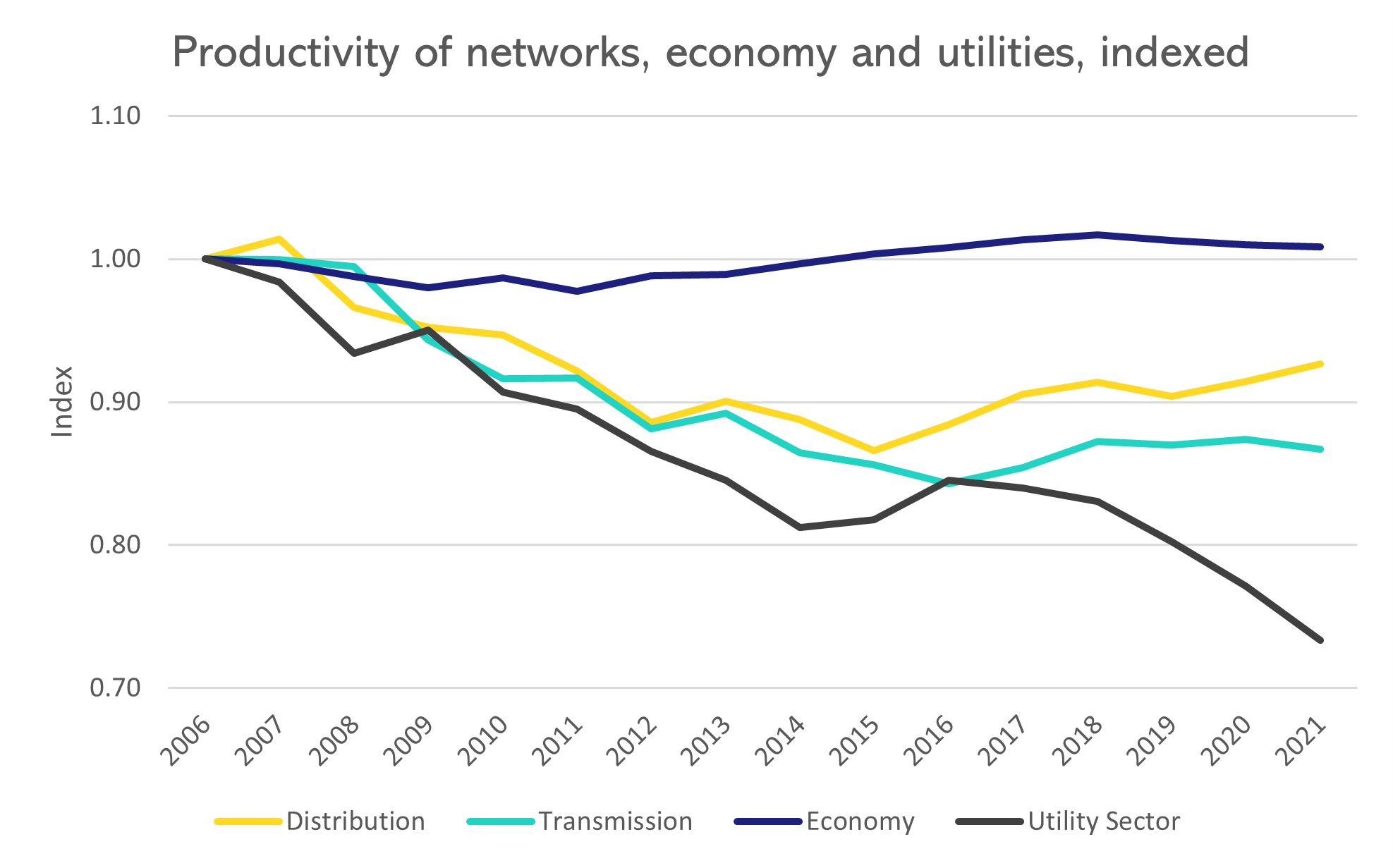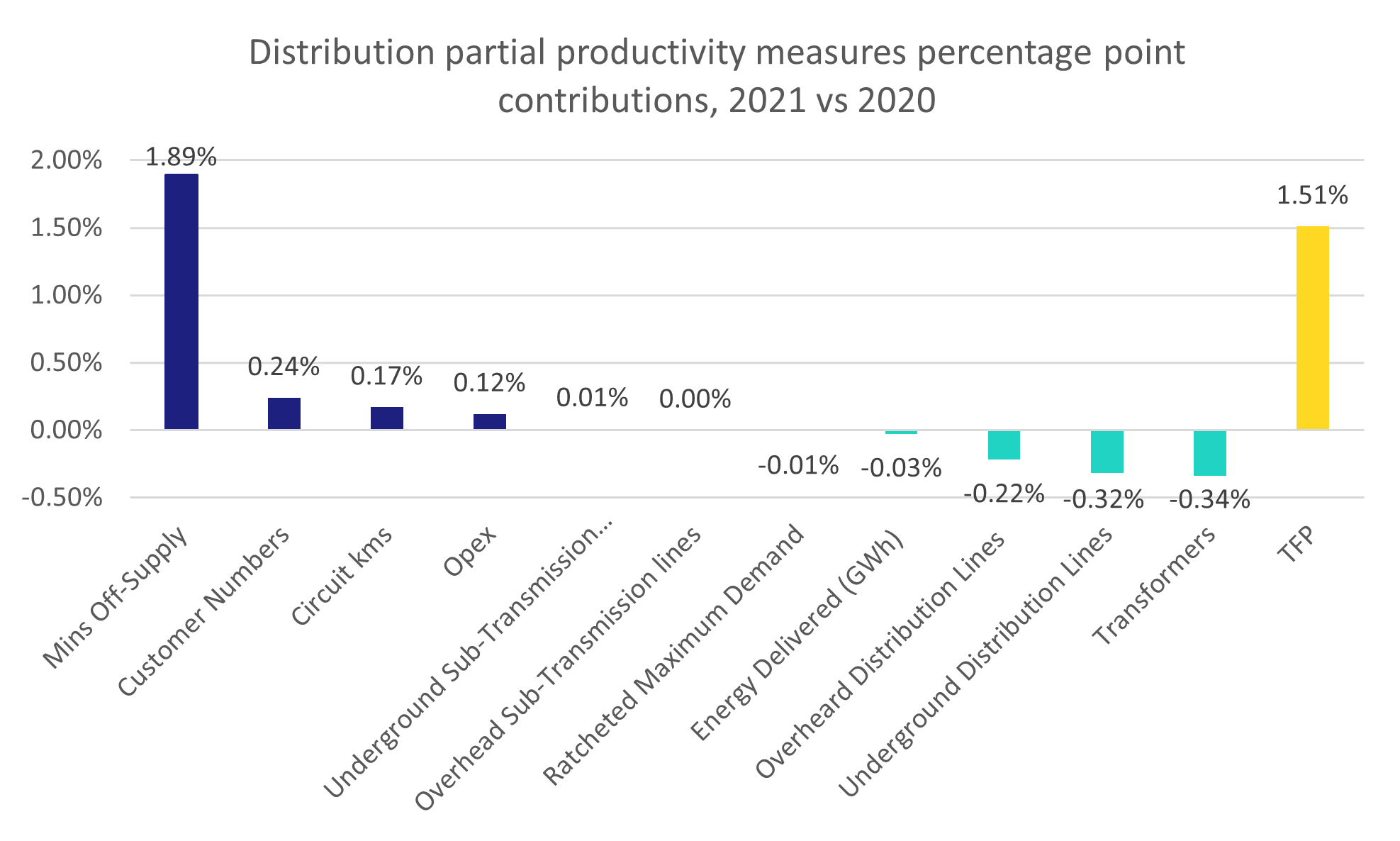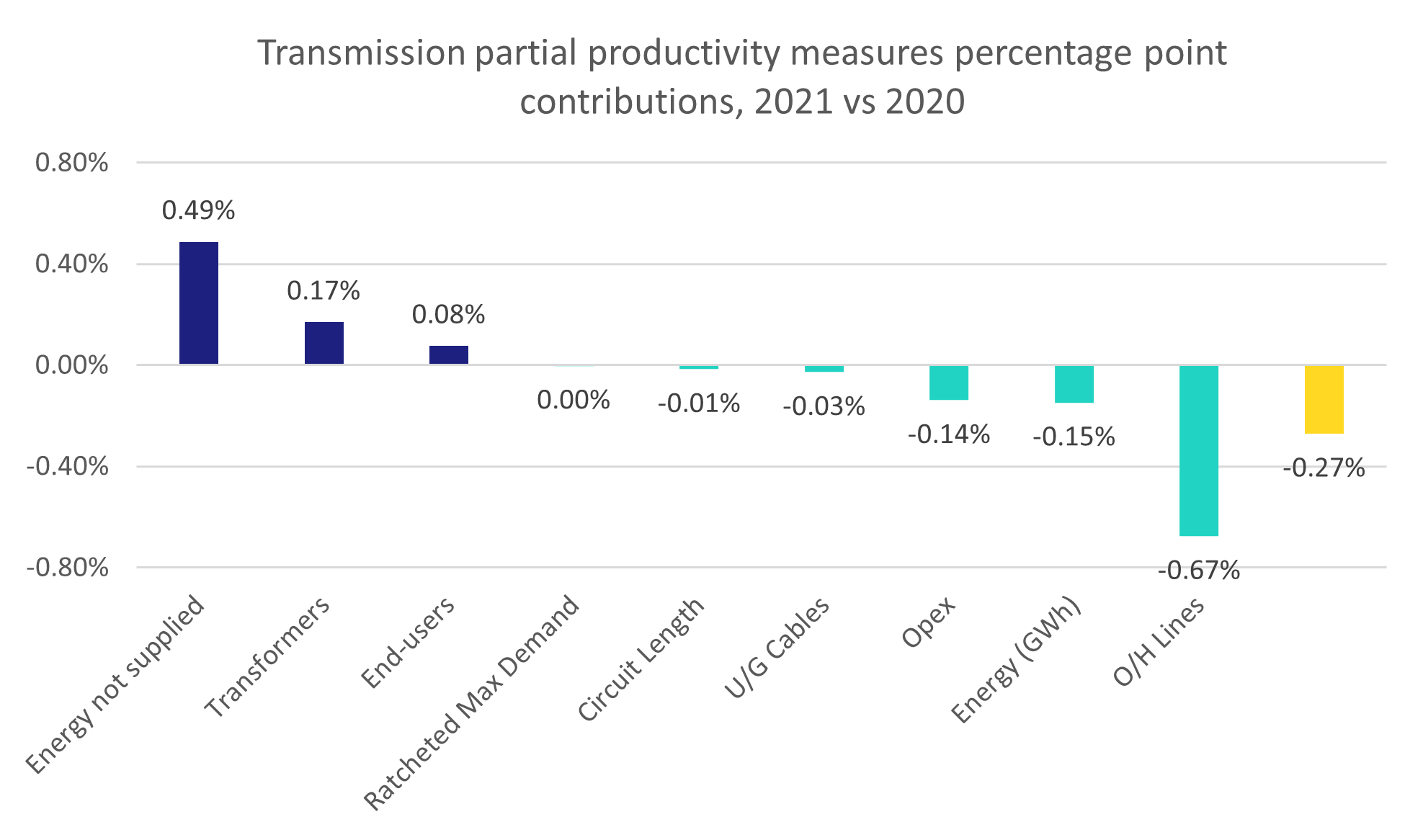AER Annual Benchmarking Report: Network productivity increases
Productivity has grown for National Electricity Market (NEM) distribution networks and remained in line with the wider economy for transmission networks according to the Australian Energy Regulator (AER) 2022 Annual Benchmarking reports for Distribution and Transmission released last week.
An increase in productivity is defined as a higher ratio of outputs vs inputs than previously measured, and from a customer perspective typically means either lower bills, greater reliability, or both. Productivity is an important metric for regulators that is used during revenue determinations to ensure that network businesses’ revenues reflect the efficient cost of service provision.
The reports detail each network business’ productivity using several inputs and outputs, including the amount of assets, operating expenditure (opex), reliability, number of customers, maximum demand, total energy delivered and how far electricity is transported. They include information up to 2020-21 for all NEM networks, noting a switch in reporting year from calendar to financial years for Victorian distribution networks.
Trends in productivity
Distribution network productivity, measured by multilateral total factor productivity (TFP), increased by 1.5 per cent in 2021. This follows the upwards trend in productivity since 2015.
Productivity declined 0.3 per cent in the electricity transmission network, bucking a trend of increasing productivity since 2016. It does, however, remain above 2016 levels.
These results represent an outperformance compared with the wider utilities sector which showed a 5.0 per cent decline and productivity trends in the overall Australian economy which declined 0.2 per cent in 2021.

Source: AER Annual Benchmarking Reports Supporting Information, ABS Estimates of Industry Multifactor Productivity
Distribution long-term productivity levels have slightly converged amongst businesses since 2006, meaning the gap between most and least productive is tightening. The same trend can be seen among most transmission networks.
Increasing network reliability
Increasing reliability was the key improvement for distribution and transmission networks in 2021. Measured through minutes off supply, reliability indicates a network’s ability to provide a continuous supply of electricity.
Distribution networks’ reliability contributed 1.9 percentage points to Total Factor Productivity (TFP) growth. Fewer disruptive weather events were the main cause for the uptick in reliability 2020-21. Increases in customer numbers, circuit line length and opex also made small positive contributions to productivity measures.

Source: AER Annual Benchmarking Reports Supporting Information
Transmission network’s reliability contributed 0.5 percentage points to TFP growth. However, the positive impact was offset from an increase in inputs, namely the capital for overhead line capacity contributing 0.7 percentage points to the overall decrease.

Source: AER Annual Benchmarking Reports Supporting Information
Fit for purpose benchmarking
Benchmarking can be one of multiple tools for regulators and customers to understand how network businesses have been performing. Like most measures, the results are only as useful as the appropriateness of the inputs and analysis.
As the energy market evolves, it is important for performance reporting methods to evolve along with it. For example, additional metrics will likely be required to appropriately capture the benefits to customers of enabling more distributed energy resources (DER).
The AER has an ongoing benchmarking development program looking at incremental improvements in data and methods, as well as focusing on specific issues, such as DER, that could improve the reliability and applicability of benchmarking results. Focused benchmarking, targeted to the right metrics, representing outcomes that customers and the community seek, can provide stronger incentives for continued improvement in delivering for customers.
Where to go from here
Improving productivity among networks has supported the provision of the strong outcomes for customers in recent years, including increasing reliability since 2016 and downward pressure on prices. The trends in 2020-21 also defy national trends in other energy sectors.
But it doesn’t stop here. Benchmarking incentivises network businesses to continue to improve. Benchmarking needs to continuously improve to ensure it reflects the outcomes customers and the community value – it plays a vital role in driving the best customer outcomes. As benchmarking is considered in revenue determinations, the best customer outcomes can be achieving through ensuring benchmarking recognises and appropriate measures relevant services.


